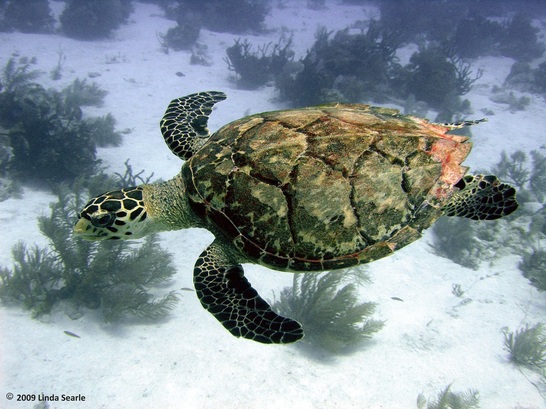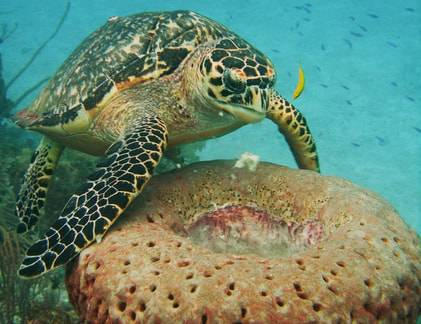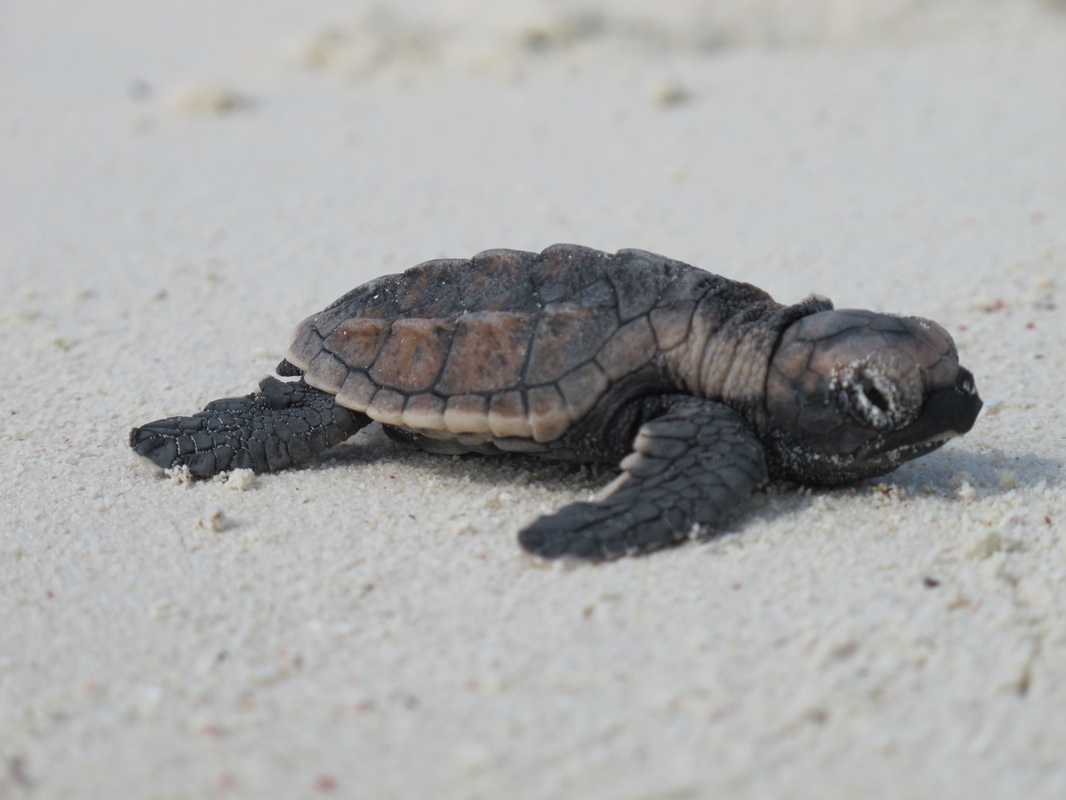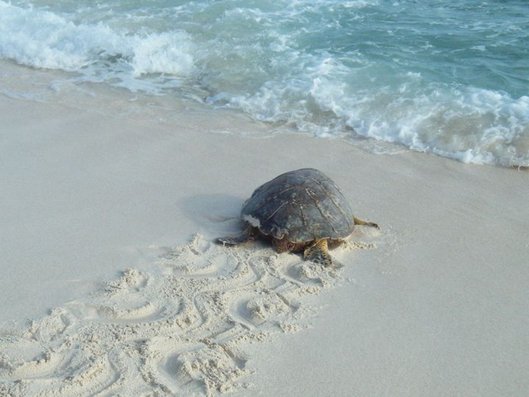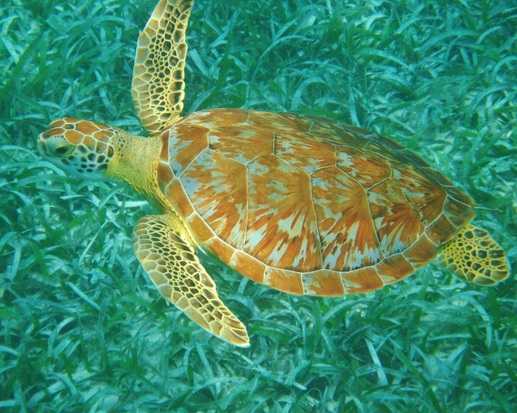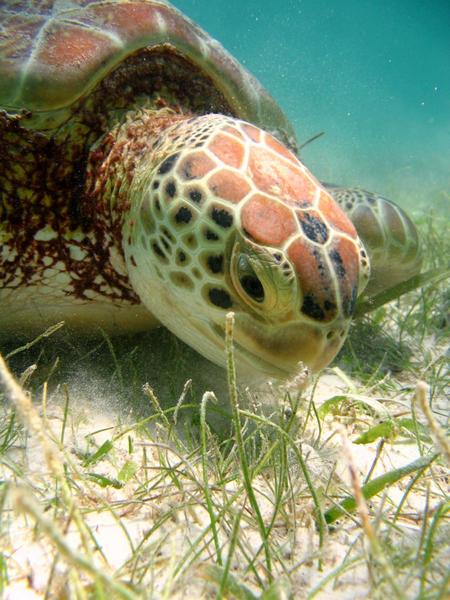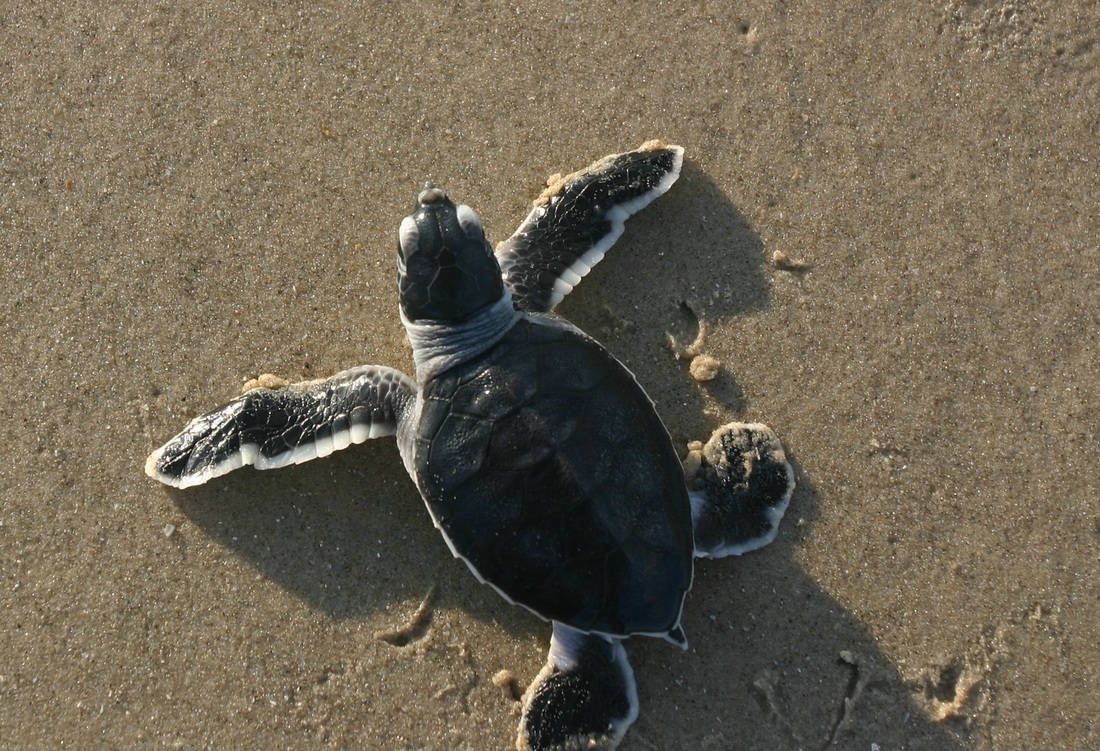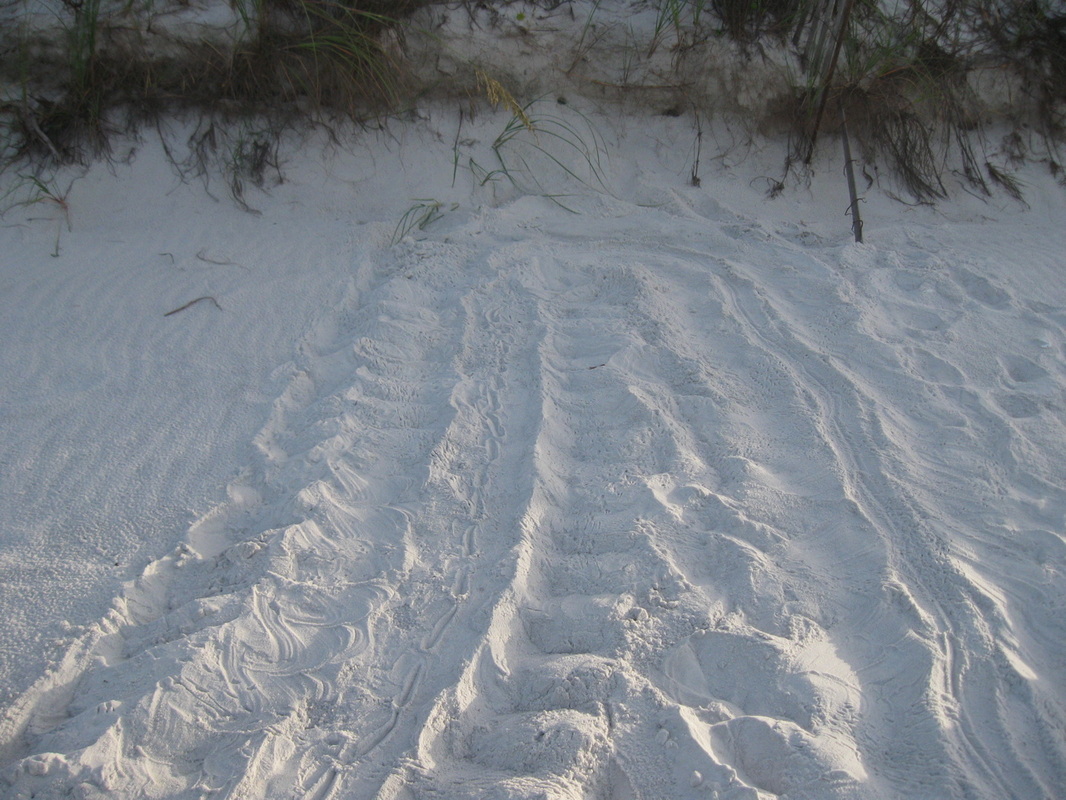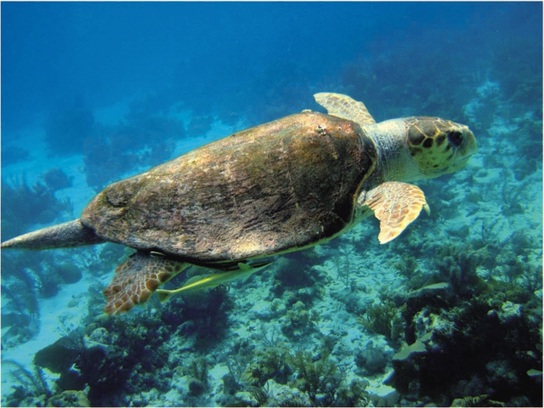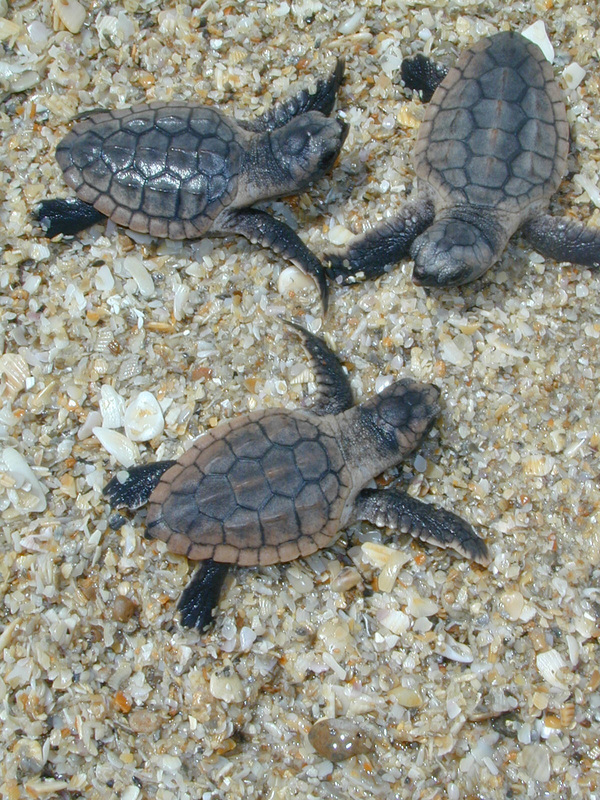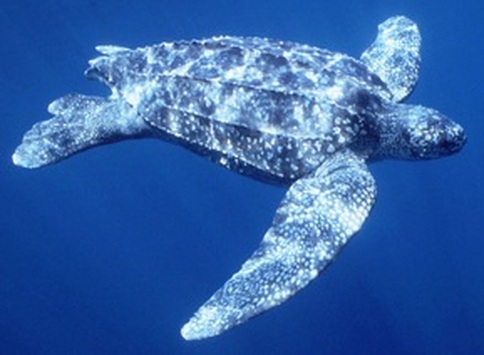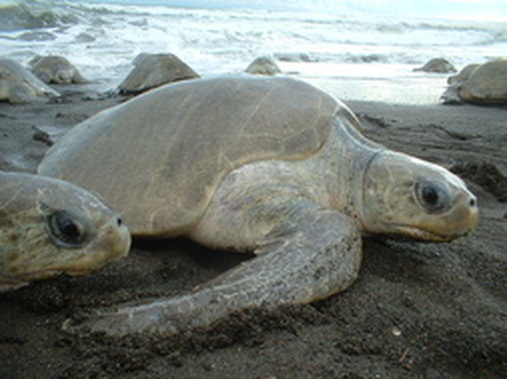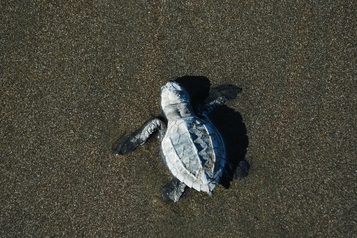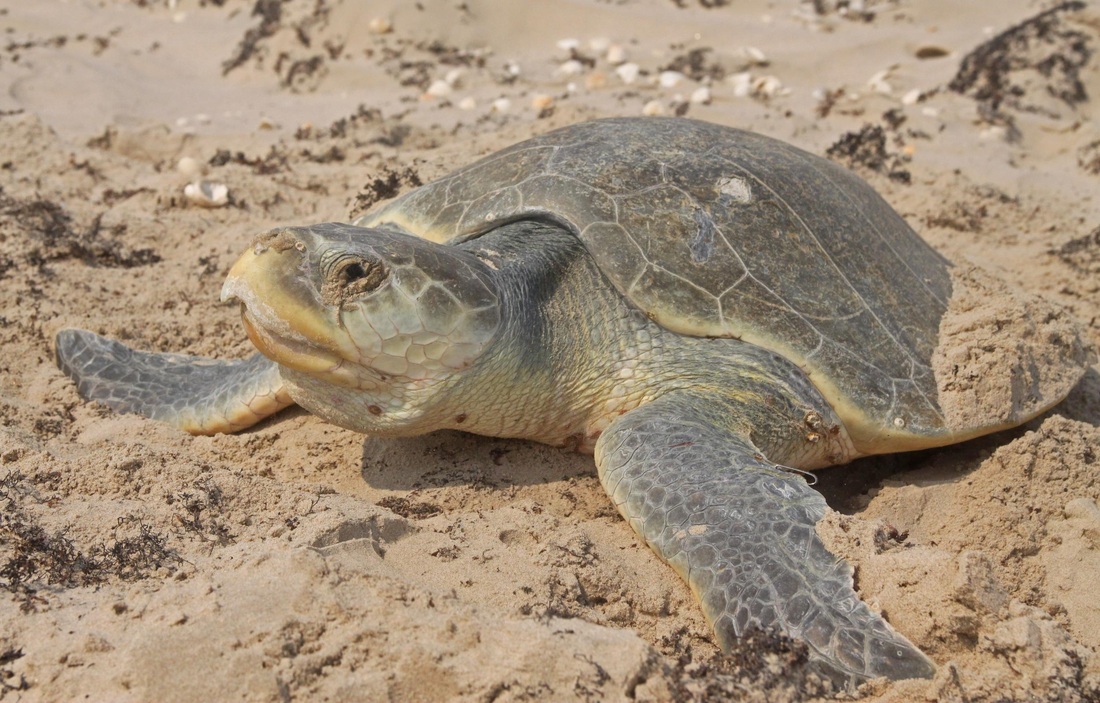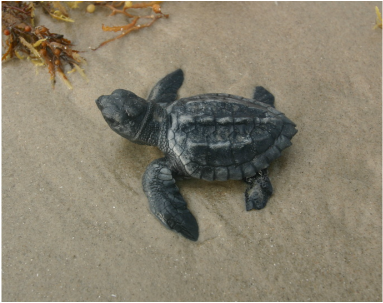Learning to distinguish between the different sea turtle species in Belize is easy!
There are only three common species and two rarely sighted species.
There are only three common species and two rarely sighted species.
Follow the link to our page for more detailed sea turtle anatomy
Hawksbill Sea Turtle - Eretmochelys imbricata (Linnaeus 1766)
Identification
Hawksbill turtles can be distinguished by their 4 pairs of overlapping lateral scutes and hawk-like beak. They have 2 pairs of pre-frontal scales and can weigh up to 200 pounds. Their shell has the characteristic mottled tortoise shell appearance.
Hawksbill turtles can be distinguished by their 4 pairs of overlapping lateral scutes and hawk-like beak. They have 2 pairs of pre-frontal scales and can weigh up to 200 pounds. Their shell has the characteristic mottled tortoise shell appearance.
Facts
Hawksbill sea turtles were once harvested for their shell which was used to make jewelry, eye glasses and other items from their shell which is known as tortoise shell.
Juvenile and adult hawksbill sea turtles are found throughout Belize and reports received in the Sea Turtle Census indicate they are the MOST abundant sea turtle in Belize!
Hawksbill sea turtles were once harvested for their shell which was used to make jewelry, eye glasses and other items from their shell which is known as tortoise shell.
Juvenile and adult hawksbill sea turtles are found throughout Belize and reports received in the Sea Turtle Census indicate they are the MOST abundant sea turtle in Belize!
Diet
Their favorite habitat is coral reefs where they spend the day looking for their favorite food - sponges!
Their favorite habitat is coral reefs where they spend the day looking for their favorite food - sponges!
Hatchlings
The scutes don't appear to overlap in hawksbill hatchlings but they will have 4 lateral scutes and the only other sea turtle that has four lateral scutes is the green (which have white along the edges of their flippers and also have a white plastron) so you can distinguish between the two. There are also 2.5 marginal scutes to the 1st lateral scute.
The scutes don't appear to overlap in hawksbill hatchlings but they will have 4 lateral scutes and the only other sea turtle that has four lateral scutes is the green (which have white along the edges of their flippers and also have a white plastron) so you can distinguish between the two. There are also 2.5 marginal scutes to the 1st lateral scute.
Tracks
Hawksbill turtles have asymmetrical tracks when they crawl up on the beach. These are created because the turtle moves one flipper forward at the same time as the opposite side. This leaves behind asymmetrical or a 'zipper' of tracks. Hawksbill asymmetrical tracks typically have a width of 70-85cm.
Hawksbill turtles have asymmetrical tracks when they crawl up on the beach. These are created because the turtle moves one flipper forward at the same time as the opposite side. This leaves behind asymmetrical or a 'zipper' of tracks. Hawksbill asymmetrical tracks typically have a width of 70-85cm.
Green Sea Turtles - Chelonia mydas (Linnaeus 1758)
|
Facts
According to Christopher Columbus "green sea turtles were once so abundant they covered the seas." Green turtles are actually named after the color of their fat which is probably attributable to all the sea grass they consume. |
Video: Green sea turtle filmed at Half Moon Caye Wall on Lighthouse Reef Atoll. Courtesy Gordon Kirkwood
|
|
Identification
Greens are the second largest sea turtle and can weigh up to 500 pounds. They can be easily identified by their 4 pairs of lateral scutes and single pair of pre-frontal scales. They can sometimes be confused with hawksbill turtles since their carapace is can be mottled like tortoise shell. The scutes of green turtles have a white line separating the scutes whereas the hawksbill turtle has overlapping scutes. Hatchlings
Green turtle hatchlings are easy to identify by the white line that extends along the edge of their flippers and carapace. Tracks
Adult greens have symmetrical tracks that have an average width of 100-130cm. These symmetrical tracks are made by the turtle pulling themselves up the beach by moving their front flippers forward simultaneously. |
Diet
Green sea turtles are the vegetarians of sea turtles and eat what else, turtle grass! Juveniles and adults can be found on reefs and over seagrass beds throughout Belize eating turtle grass or manatees grass. Turtle grass has wide flat blade and manatee grass has narrow cylindrical blades.
Green sea turtles are the vegetarians of sea turtles and eat what else, turtle grass! Juveniles and adults can be found on reefs and over seagrass beds throughout Belize eating turtle grass or manatees grass. Turtle grass has wide flat blade and manatee grass has narrow cylindrical blades.
Visit our Photo ID page for pictures and videos
of more turtles sighted in Belize!
Loggerhead Sea Turtle - Caretta caretta (Linnaeus 1758)
|
Facts
Juvenile loggerheads are not common in Belize so sightings of this size would be very important. Each year around March many divers report seeing more male loggerheads as it leads up to mating season. They are curious and even approach and size up divers but once they realize divers are not turtles they move on in their search of a female loggerhead as they have done for 100s of years. Identification
Loggerhead turtles can easily be distinguished by their large head. They can weigh up to 450 pounds and their shell can be up to 3.5 feet in length. They have 5 pairs of lateral scutes. Diet
Adult loggerhead sea turtles are observed cruising coral reefs looking for crustaceans and mollusks. Hatchlings
Even the loggerhead hatchlings have a big head, but to confirm you can count 5 lateral scutes on their carapace. Tracks
Like the hawksbill, loggerhead turtles make asymmetrical or zipper-like tracks when they crawl onto the beach to nest. However, they tend to be a bit larger on average than the hawksbill in width and since they are heavier produce a deeper body pit. Loggerhead tracks average in around 80-90 cm and larger in width. |
Video courtesy Gordon Kirkwood - On November 15th, 2011 Gordon was able to capture this video of a loggerhead while diving Amberhead, Turneffe Atoll
|
Leatherback Sea Turtle - Dermochelys coriacea (Vandelli 1761)
|
Facts
Adult leatherback sea turtles are occasionally observed in the open ocean and in the Victoria Channel which extends along the coast of Belize from Robinson Point to Monkey River. There have been no confirmed nesting leatherback sea turtles in Belize as yet, but they nest in neighboring Mexico and Guatemala, so it is highly likely that they will also nest in Belize! Identification
Leatherback turtles are the only sea turtle that has a soft shell. They are the largest of all sea turtles and can weigh up to a ton and have shells of up to 8 feet in length! They are easily identifiable by their size, soft carapace and prominent ridges on their carapace. |
Diet
Leatherbacks swim through the open ocean and feed primarily on jellyfish.
Leatherbacks swim through the open ocean and feed primarily on jellyfish.
Tracks
Leatherback turtles have symmetrical tracks like green turtles. However, it should come as no surprise that the width of leatherback turtle tracks is significantly larger than that of the green! Leatherback turtles leave tracks that have an average width of 150-230cm and larger.
Leatherback turtles have symmetrical tracks like green turtles. However, it should come as no surprise that the width of leatherback turtle tracks is significantly larger than that of the green! Leatherback turtles leave tracks that have an average width of 150-230cm and larger.
It is unlikely there will be nesting ridley sea turtles in belize since they are known to nest in arribadas, where hundreds synchronize the time they nest, but they may be seen while snorkeling or diving, though unlikely, it is possible to good to be aware of these other species!
Olive Ridley Turtle
|
Kemp's Ridley Turtle
|
Test YOUR Turtle IQ
|
|
|
|

